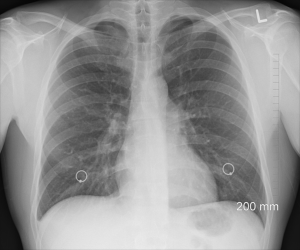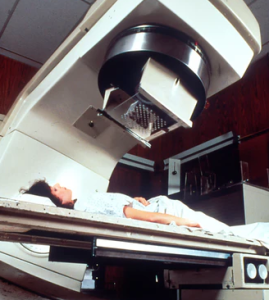
Severe cases of lung disease and damage, often from the inhalation of toxic chemicals, can cause the structure of your lungs to change at the cellular level. Cells can mutate and become unable to perform their basic functions, and they can also develop replication rates that are much higher than usual.
As these rapidly replicating cells continue to grow in number, they create tumors in the lungs and can begin to spread to nearby lymph nodes. This condition is known as lung cancer.
If left untreated, lung cancer can be deadly. However, it can be treated with success if it is detected early.
Learn about the different types of lung cancer and understand your treatment options for each.
How Lung Disease Becomes Lung Cancer
Lung cancer, like lung disease, is primarily the result of the inhalation of dangerous chemicals.
Different carcinogenic or cancer-causing chemicals include asbestos, radon, benzene, ethylene oxide, and nitrosamines found in tobacco. You may be exposed to some of these through your line of work or in your environment, but the majority of lung cancer cases come from the carcinogens inhaled when smoking cigarettes.
These chemicals damage your cells to the extent that they can change your cellular DNA, meaning all cells that replicate from the mutated cells will carry the same mutation. This then leads to the development of cancerous tumors, which prevent your lungs and other affected areas of your body from functioning regularly.
Types of Cancers That Affect the Lungs
Not all cases of lung cancer are the same. Some may come from different causes, and others may develop and harm the body in different ways. Each type of lung cancer has its own common treatment methods.
Here, we will take a look at two different kinds of cancers that affect organs, known as carcinoma. These are adenocarcinoma and squamous cell carcinoma.
Adenocarcinoma
Adenocarcinoma is characterized by its development inside the glands. This means it is usually localized around one organ, though it can later spread to other parts of the body.
Common symptoms indicating the development of this lung illness differ depending on what organ is being affected. For lung cancer, it is most common to cough up bloody mucus.
Diagnosing lung adenocarcinoma involves imaging and tests, specifically a lung tissue biopsy.
Diagnosis Frequency
Lung adenocarcinoma is estimated to account for as many as 40% of all lung cancer cases. Adenocarcinoma can also occur in other organs, such as the breast, pancreas, colon, and prostate.
Most cases of adenocarcinoma occur in smokers. However, it is also the most common type of lung cancer developed by non-smokers when compared to squamous cell carcinoma and other subtypes.
Managing Adenocarcinoma and Other Lung Illnesses
The best treatment option for adenocarcinoma depends on how far the cancer has progressed and how physically fit the rest of the body is.

Different treatment methods include radiation therapy, chemotherapy, surgery, immunotherapy, and the use of angiogenesis inhibitors, which work to ‘starve’ tumor cells of nutrients.
Other healthy choices, like quitting smoking and maintaining good nutrition, can support the long-term efficacy of these treatments.
Squamous Cell Carcinoma
Squamous cell carcinoma gets its name from where it originates. This kind of cancer begins in the squamous epithelium, which is a cell layer in your skin, as well as in the airways inside your lungs.
Squamous cell carcinoma is best known as a cause of skin cancer, but it can also affect your lungs and respiratory tract.
This kind of cancer can also spread to other areas of your body, including the lymph nodes in your lungs, your adrenal glands, liver, bones, and brain.
Diagnosis Frequency
Squamous cell carcinoma is a little less common than adenocarcinoma, accounting for about 30% of lung cancer cases.
Like adenocarcinoma, squamous cell carcinoma can come from the inhalation of toxic chemicals, especially those contained in cigarette smoke. Radioactive gases and other chemicals like gasoline, arsenic, and talcum powder have also been identified as having a strong correlation with squamous cell carcinoma.
In some cases, repeated lung inflammation from tuberculosis, pneumonia, and similar conditions can increase the risk of developing this kind of lung cancer as well.
Treatment Options for Squamous Cell Carcinoma

Most early stage treatments focus on surgery and medications. If the cancer has started to spread through the body or if it is especially aggressive, methods like radiation therapy and chemotherapy may become necessary treatment options.
Treatment success rates often depend on how early the lung condition is detected and the specific type of cancer involved.
Final Thoughts
Identifying lung cancer early is the key to dealing with this frightening diagnosis. Quitting smoking and seeking treatment for any respiratory symptoms or irregularities in your breathing will give you the best chances of detecting the condition early and getting the care you need.
